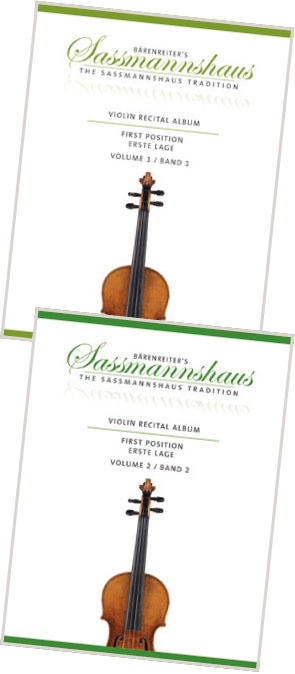Violin Sheet Music Reviews: September 2018
Helena Ruinard
Saturday, September 1, 2018
Helena Ruinard rounds up some violin sheet music for the new academic year.

Vivaldi Concerto in G major, Op. 3 No. 3
Bärenreiter BA 8980, £8.50
Seitz Student Concerto in G minor, Op. 12
Bärenreiter BA 8985, £8.50
de Bériot Violin Concerto No. 9 in A minor, Op. 104
Bärenreiter BA 10696, £11.00
de Bériot Scène de Ballet, Op. 100
Bärenreiter BA 10695, £11.00
In collaboration with Kurt Sassmannshaus, Bärenreiter have put together a collection of repertoire for younger students which is popular because of its apparent virtuosity; in other words, it's designed to achieve maximum impact with the simplest techniques. The Concert Pieces Collection includes well-known educational pieces by Oskar Rieding, Friedrich Seitz, Jean-Baptiste Accolay, Vittorio Monti, Joseph-Hector Fiocco, Antonio Vivaldi and Charles-August de Bériot, all in editions for violin and piano, with fingerings and bowings by Kurt Sassmannshaus. There are also transcriptions of Rieding's B minor concerto for viola and piano (transposed into E minor), and Seitz's D major concerto for cello and piano (transposed into G major).
Ideal for motivating students who have a good grasp of first and third positions, who can manage shifts between first, second and third positions and play nice detaché and martelé strokes, the Vivaldi Concerto sits alongside Suzuki Book 4 or ABRSM Grades 4 to 5. Once basic staccato, spiccato, double-stopping and shifting between positions 1 to 5 has been covered, the Seitz is stimulating material for keen performers around Grade 5 or 6. In one of his useful introductions, Sassmannshaus recommends having first studied Accolay's A minor concerto and Monti's Czardas, which conveniently form part of this set of publications.
The de Bériot pieces are another step on from the Seitz and are a delight to play from a violinistic angle, giving ample opportunities to consolidate technique and providing instant reward in musical terms once the player has the relevant technical mastery. Yes, they are quite long, some of the double-stops are ferociously high, the arpeggios scamper all over the instrument in a-metrical flourishes and there is plenty of ricochet, spiccato and suggested down and up bow staccato, all of which might seem like too much of a challenge to some students. But these remain good student pieces, written by an eminent violinist and teacher for his students. Tackled with a systematic approach to technique, they will not only sound impressive, but give your student the skills and experience to move on to great works in the Romantic literature.

Violin recital album, first position, volume one and two
Designed to work alongside the Sassmannshaus Early Start on the Violin tutor books, these collections can of course be used to provide companion pieces to any violin tutor. There is no accompanying CD or MP3 track to download, but rather the emphasis is on the joy of live music-making, with the option of either a piano accompaniment or a violin duet accompaniment for the teacher.
Volume one employs a nice selection of bow strokes right from the beginning of the collection. The first pieces are evidently intended for beginners but they are longer than anything in most tutor books and rather foursquare. I would skip to the end to find pieces for children with two or three terms of experience who will find challenge and reward in pieces by Septimus Winner, Krogman, Volti and an English folksong in which Sasmannshaus’ arrangements employ simple bariolage, grace notes implying chords and other simple bow techniques which sound impressive.
Volume two contains companion pieces for volumes two and three of Early Start on the Violin which introduce low second finger, high third finger and then low first finger, therefore equivalent to Grades 2 to 3. The pieces are still all in first position but imply a musical freedom which many students would be delighted to possess at Grade 3 or 4 level. Again, they call for a variety of bowing, with simple double-stops, slurs, hooked bowing and plenty of staccato. There are some charming character pieces such as the Arminta Waltz by Martin Greenwald and the Capriccio Polka by Salvador Léonardi, and although long compared to most student pieces these days, that is a positive feature for the serious young student wanting to perform. These are definitely useful teaching pieces but, given the rich resources we now have which introduce young players to the great composers as well as engaging contemporary styles, this is a book to be dipped into and used sparingly with most students.

